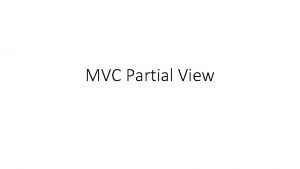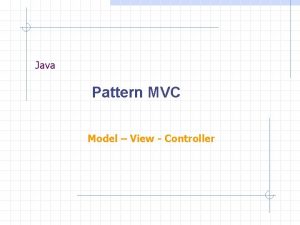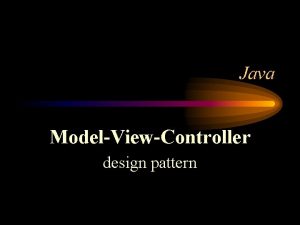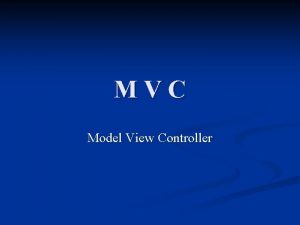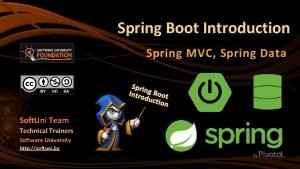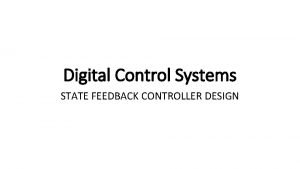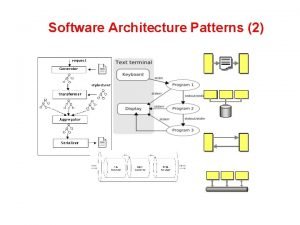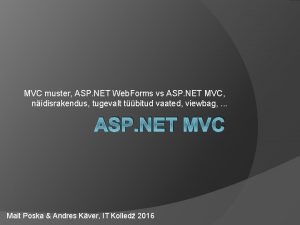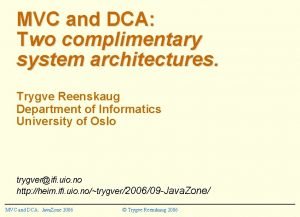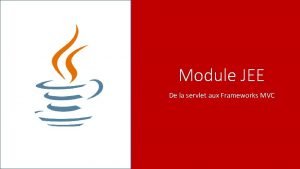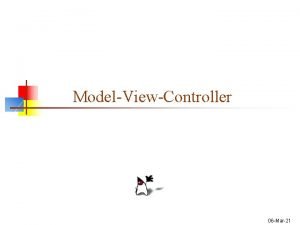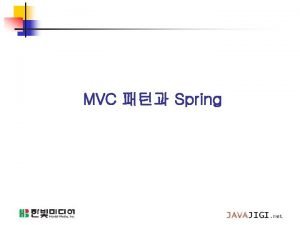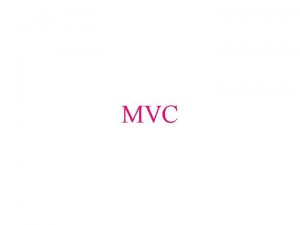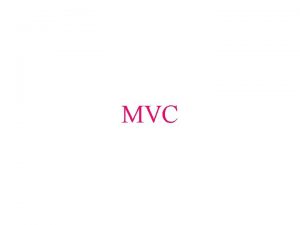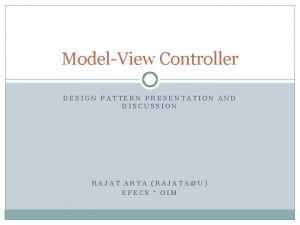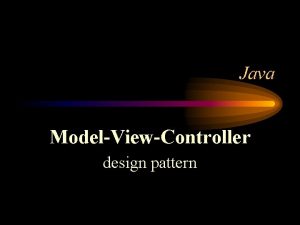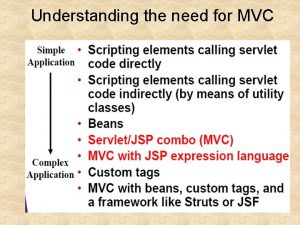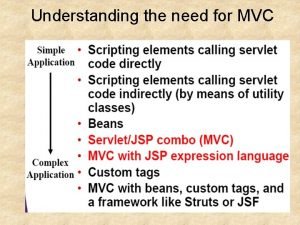ModelView Controller Design Pattern 1 The MVC Pattern










- Slides: 10

Model-View. Controller Design Pattern 1

The MVC Pattern • MVC stands for Model-View-Controller • The Model is the actual internal representation • The View (or a View) is a way of looking at or displaying the model • The Controller provides for user input and modification • These three components are usually implemented as separate classes 2

The Model • The Model is the part that does the work--it models the actual problem being solved • The Model should be independent of both the Controller and the View • But it provides services (methods) for them to use • Independence gives flexibility, robustness 3

The View • Typically, the user has to be able to see, or view, what the program is doing • The View shows what the Model is doing • The View is a passive observer; it should not affect the model • The Model should be independent of the View (but it can provide access methods) • The View should not display what the Controller thinks is happening 4

The Controller • The Controller decides what the model is to do • Often, the user is put in control by means of a GUI • in this case, the GUI and the Controller are often the same • The Controller and the Model can almost always be separated (what to do versus how to do it) • The design of the Controller depends on the Model • The Model should not depend on the Controller 5

Combining Controller and View • Sometimes the Controller and View are combined, especially in small programs • Combining the Controller and View is appropriate if they are very interdependent • The Model should still be independent • Never mix Model code with GUI code! 6

Separation of concerns • As always, you want code independence • The Model should not be contaminated with control code or display code • The View should represent the Model as it really is, not some remembered status • The Controller should talk to the Model and View, not manipulate them • The Controller can set variables that the Model and View can read 7

Summary • A Model does the “business logic” • It should be I/O free • Communication with the Model is via methods • This approach gives maximum flexibility in how the model is used • The Controller organizes the program and provides input (control) to the Model • The View displays what is going on in the model • It should never display what should be going on in the model • Especially in small programs, the Controller and View are often combined 8


References • Matuszek, David - CIT 591 Programming Languages & Techniques I 10
